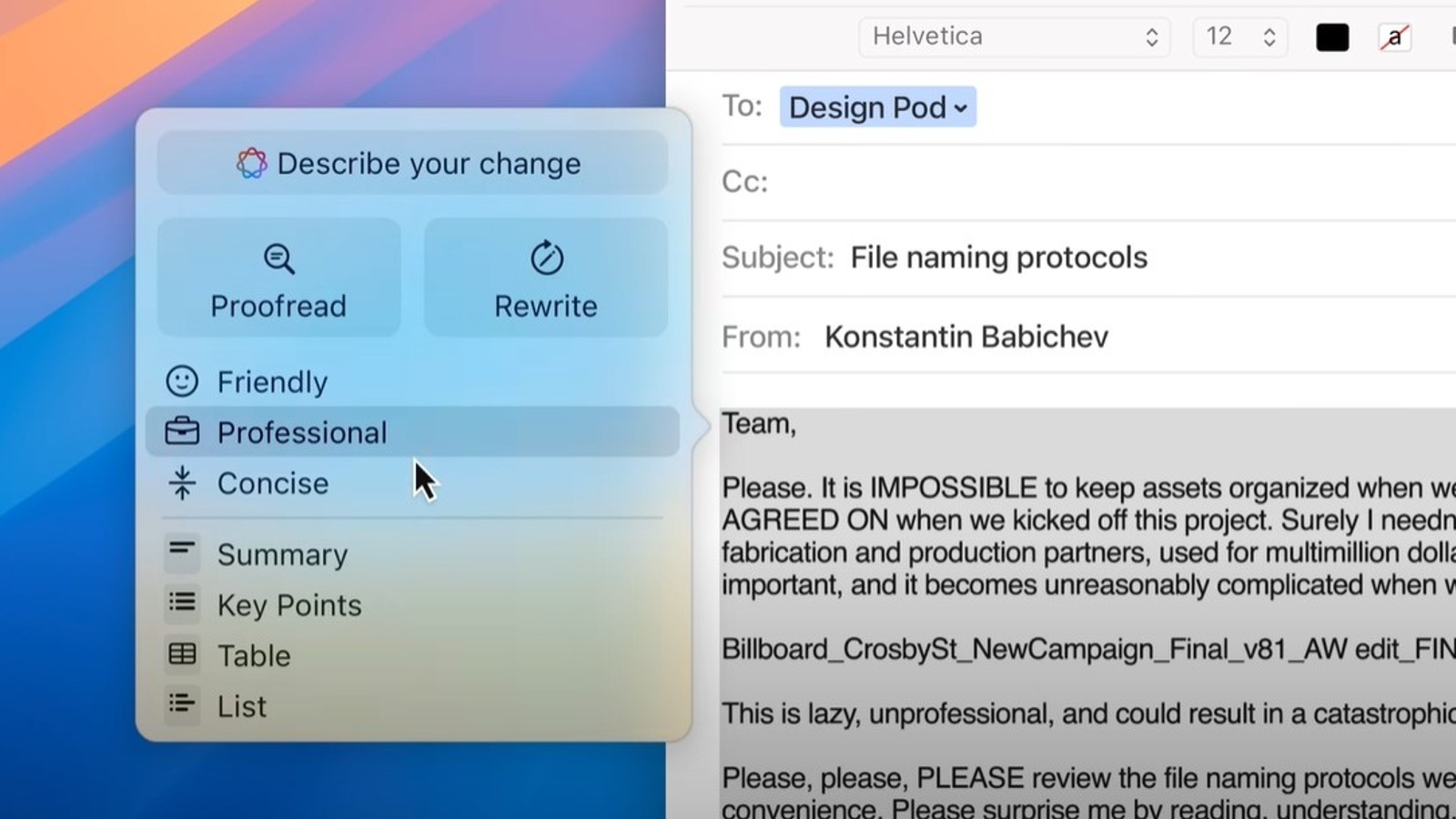Top Apple Intelligence features and list of eligible iPhones, iPads, and Macs
Apple Intelligence integrates generative AI features into apps and services, similar to Samsung's Galaxy AI features.
 Apple Intelligence coming to eligible devices this fall (Image credit: Apple)
Apple Intelligence coming to eligible devices this fall (Image credit: Apple)Apple introduced Apple Intelligence at its annual WWDC on Monday. It integrates generative AI features into apps and services, similar to Samsung’s Galaxy AI features.
 Writing tools are available via Apple Intelligence. (Image credit: Apple)
Writing tools are available via Apple Intelligence. (Image credit: Apple)
Apple refers to it as “personal intelligence,” and it is available on select iPhones, iPads, and Macs. It includes writing tools that enable users to adjust the tone of an email to make it sound more friendly, professional, or concise. Users can also proofread and rewrite the entire content without leaving the Mail app.
Another great feature of Apple Intelligence is “Genmoji”, which allows users to create custom emojis using simple text prompts such as “t-rex or a surfboard,” or a “smiley relaxing wearing cucumber” or something random like a “Squirrel DJ”. Besides, one can also transform a regular picture from the photo library into a “Genmoji”.
 Smiley relaxing wearing cucumber Genmoji. (Image credit: Apple)
Smiley relaxing wearing cucumber Genmoji. (Image credit: Apple)
Apple Intelligence also includes an image generator called Image Playground. This generator accepts simple text inputs, and users can choose between three different styles: animation, illustration, and sketch. These images can be shared on messaging apps and social media platforms. One can also create personalised images of a specific user, again, using any of the three aforementioned styles.
On iPads, one can convert a simple sketch into an image by simply circling over the sketch using an Apple Pencil and adding more context to create a new image in seconds.
Siri supercharged by Apple Intelligence
 ChatGPT-powered Siri is coming to the iPhone 15 Pro series (Image credit: Apple)
ChatGPT-powered Siri is coming to the iPhone 15 Pro series (Image credit: Apple)
Siri, powered by Apple Intelligence, is more capable than ever. With support for natural language, it can understand words even if you stumble. It also draws personal context from the information stored on the device, including information from emails. For the first time ever, you can now type to Siri. Additionally, Apple is using AI to prioritise important notifications at the top.
Memory Movie is another interesting feature of Apple Intelligence. It can create a movie based on specific photos at a user’s request. Lastly, users can also access OpenAI’s GPT4o via Siri to get more context and answer specific questions, which, according to Apple, happens without collecting personal data.
Apple Intelligence-supported chips
 Apple Intelligence is coming to devices powered by A17 Pro, M1, M2, M3, and M4 chips (Image credit: Apple)
Apple Intelligence is coming to devices powered by A17 Pro, M1, M2, M3, and M4 chips (Image credit: Apple)
Apple devices powered by the A17 Pro, M1, M2, M3, and the latest M4 chip, such as iPhones, iPads, or Macs, are eligible for Apple Intelligence for free. The first beta will be out this fall, and the services will be available in US English.
| Apple Intelligence-compatible devices | iPhones | iPad | Mac |
| iPhone 15 Pro Max A17 Pro |
iPad Pro M1 and later |
MacBook Air M1 and later |
|
| iPhone 15 Pro A17 Pro | iPad Air M1 and later |
MacBook Pro M1 and later
|
|
|
iMac M1 and later
|
|||
|
Mac mini M1 and later
|
|||
|
Mac Studio M1 Max and later
|
|||
| MacPro M2 Pro |
Only the iPhone 15 Pro and the iPhone 15 Pro Max (review) are eligible for Intelligence features, while the entire Apple Silicon-powered Macs, including the very first MacBook Air M1, launched back in 2020, are eligible for Apple Intelligence features. The same will be available for the last two generations of iPad Air and the last three generations of iPad Pro, powered by M1, M2, or M4 chips.







